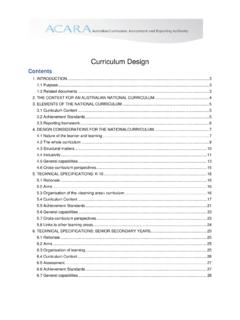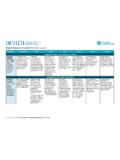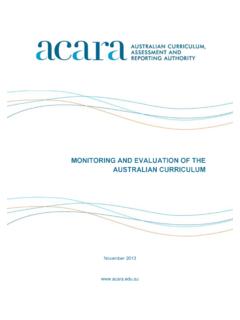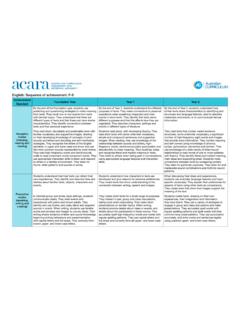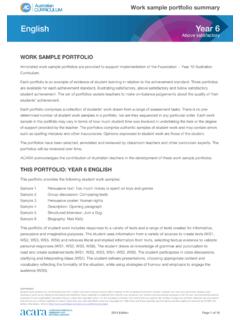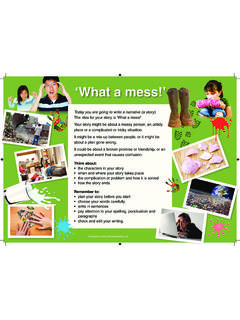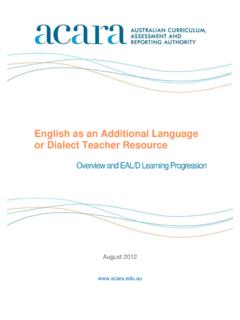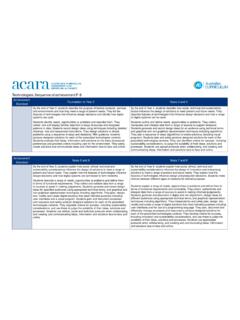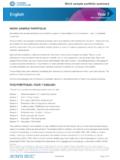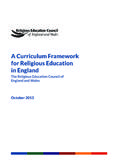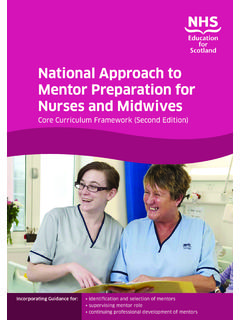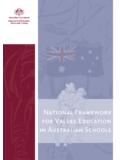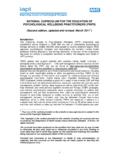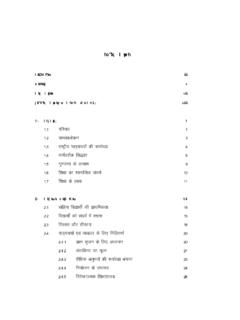Transcription of Shape of the Australian Curriculum: Mathematics
1 Shape of the Australian curriculum : Mathematics May 2009. COPYRIGHT. Commonwealth of Australia 2009. This work is copyright. You may download, display, print and reproduce this material in unaltered form only (retaining this notice) for your personal, non-commercial use or use within your organisation. All other rights are reserved. Requests and inquiries concerning reproduction and rights should be addressed to: Commonwealth Copyright Administration Copyright Law Branch Attorney-General's Department Robert Garran Offices national Circuit Barton ACT 2600. Fax: 02 6250 5989. or submitted via the copyright request form on the website Shape of the Australian curriculum : Mathematics History 2. CONTENTS. 1. PURPOSE 4. 2. INTRODUCTION 4. 3. AIMS OF THE Mathematics curriculum 5. 4. KEY TERMS 5. Content strands 5. Proficiency strands 5. Numeracy 5. Topics 5. 5. STRUCTURE OF THE Mathematics curriculum 6. Content strands 6. Proficiency strands 6. The relationship between content and proficiency strands 7.
2 Mathematics across K 12 7. 6. CONSIDERATIONS 9. Equity and opportunity 9. Connections to other learning areas 11. Clarity of the curriculum 12. Breadth and depth of study 12. The role of digital technologies 12. The nature of the learner (K 12) 13. General capabilities 13. Cross- curriculum perspectives 13. 7. PEDAGOGY AND ASSESSMENT: SOME BROAD ASSUMPTIONS 14. 8. CONCLUSION 14. Shape of the Australian curriculum : Mathematics 3. 1. PURPOSE. The Shape of the Australian curriculum : Mathematics will guide the writing of the Australian Mathematics curriculum K 12. This paper has been prepared following analysis of extensive consultation feedback to the national Mathematics curriculum Framing Paper and decisions taken by the national curriculum Board. The paper should be read in conjunction with The Shape of the Australian curriculum . 2. INTRODUCTION. The national Mathematics curriculum will be the basis of planning, teaching, and assessment of school Mathematics , and be useful for and useable by experienced and less experienced teachers of K 12 Mathematics .
3 There have been two important recent reports relevant to the development of this paper: the Australian national Numeracy Review Report (NNR, 2008); and Foundations for Success: The final report of the national Mathematics Advisory Panel (NMAP, 2008) from the United States. Although both had some emphasis on what research says about learning, teaching and teacher education, they each contribute to current considerations of the Mathematics curriculum , particularly in describing the goals and intended emphases. In addition, the national Numeracy Review Report (2008) provides a summary of current research and practice in Australian schools. The obvious imperative to create a futures-oriented curriculum provides a major opportunity to lead improved teaching and learning. This futures orientation includes the consideration that society will be complex, with workers competing in a global market, needing to know how to learn, adapt, create, communicate, interpret and use information critically.
4 If Australia's future citizens are to be sufficiently well educated mathematically for the development of society and to ensure international competitiveness, there needs to be adequate numbers of Mathematics specialists operating at best international levels, capable of generating the next level of knowledge and invention, but also of mathematically expert professionals such as teachers, engineers, economists, scientists, social scientists and planners. Successful Mathematics learning lays the foundations for study in many disciplines at tertiary level and in the applications of those disciplines. Mathematics and numeracy provide a way of interpreting everyday and practical situations, and provide the basis for many informed personal decisions. Successful Mathematics learning also provides a workforce that is appropriately educated in Mathematics to contribute productively in an ever-changing global economy, with both rapid revolutions in technology and global and local social challenges.
5 An economy competing globally requires substantial numbers of proficient workers able to learn, adapt, create, interpret and analyse mathematical information. This critical importance of Mathematics will be assumed by the Mathematics curriculum but it also needs to be reflected in: the time and emphasis allocated to Mathematics learning in schools;. the study of Mathematics teaching in teacher education programs; the resources allocated to the support of the implementation of the curriculum ; and the promotion of the value of the study of Mathematics . Shape of the Australian curriculum : Mathematics 4. 3. AIMS OF THE Mathematics curriculum . Building on the draft national Declaration on Educational Goals for Young Australians, a fundamental aim of the Mathematics curriculum is to educate students to be active, thinking citizens, interpreting the world mathematically, and using Mathematics to help form their predictions and decisions about personal and financial priorities.
6 Mathematics also enables and enriches study and practice in many other disciplines. In a democratic society, there are many substantial social and scientific issues raised or influenced by public opinion, so it is important that citizens can critically examine those issues by using and interpreting mathematical perspectives. In addition, Mathematics has its own value and beauty and it is intended that students will appreciate the elegance and power of mathematical thinking, experience Mathematics as enjoyable, and encounter teachers who communicate this enjoyment in this way, positive attitudes towards Mathematics and Mathematics learning are encouraged. 4. KEY TERMS. This paper uses four terms that together describe the Mathematics curriculum : content strands, proficiency strands, numeracy and topics. The cornerstone of Mathematics is its interconnectedness, and while these distinctions are somewhat artificial, they facilitate the organisation of the curriculum in a form that will enable the achievement of the aims described in this paper.
7 Content strands The content strands are the collected concepts and terms that form the basis of the curriculum . To maximise interconnections, coherence and clarity, the concepts and terms are grouped into developmental sequences that are termed strands. For mathematical and pedagogical reasons, it is proposed that the national Mathematics curriculum includes three content strands: Number and algebra, Measurement and geometry, and Statistics and probability. Proficiency strands In many jurisdictions the term working mathematically is used to describe applications or actions of Mathematics . This term does not encompass the full range of desired actions nor does it allow for the specification of the standards and expectations for those actions. It is proposed that the national Mathematics curriculum use the four proficiency strands of Understanding, Fluency, Problem solving, and Reasoning, adapted from the recommendations in Adding it Up (Kilpatrick, Swafford & Findell 2001), to elaborate expectations for these actions.
8 These proficiency strands define the range and nature of expected actions in relation to the content described for each of the content strands. Numeracy Numeracy is the capacity, confidence and disposition to use Mathematics to meet the demands of learning, school, home, work, community and civic life. This perspective on numeracy emphasises the key role of applications and utility in learning the discipline of Mathematics , and illustrates the way that Mathematics contributes to the study of other disciplines. Topics Content areas within Mathematics are commonly identified as topics to facilitate planning and teaching. The topics form the knowledge and skill building blocks of the strands. Examples of topics include fractions, area and measures of central tendency. It is not intended that these topics be considered separately during the teaching and learning of Mathematics ; and connections between topics should be emphasised. Shape of the Australian curriculum : Mathematics 5.
9 5. STRUCTURE OF THE Mathematics curriculum . The Mathematics curriculum will be organised around the interaction of content and proficiency strands. Content strands The three content strands in the national Mathematics curriculum will be: Number and algebra: In this content strand the concentration in the early years will be on number, and near the end of the compulsory years there will be emphasis on algebra. Recent research has emphasised the connections between these. An algebraic perspective can enrich the teaching of number in the middle and later primary years, and the integration of number and algebra, especially representations of relationships, can give more meaning to the study of algebra in the secondary years. This combination incorporates pattern and/or structure and includes functions, sets and logic. Measurement and geometry: While there are some aspects of geometry that have limited connection to measurement, and vice versa, there are also topics in both for which there is substantial overlap, including newer topics such as networks.
10 In many curricula the term space is used to cover mathematical concepts of Shape and location. Yet many aspects of location, for example maps, scales and bearings, are aligned with measurement, and the term geometry is more descriptive for the study of properties of shapes, and also gives prominence to logical definitions and justification. Statistics and probability: Although teachers are familiar with the terms data and chance, statistics and probability more adequately describe the nature of the learning goals and types of student activity. For example, it is not enough to construct or summarise data it is important to represent, interpret and analyse it. Likewise, probability communicates that this study is more than the chance that something will happen. The terms provide for the continuity of content to the end of the secondary years and acknowledge the increasing importance and emphasis of these areas at all levels of study. The names of these content strands refer to substantial Mathematics sub-disciplines and so reflect more accurately the purpose of their study.
